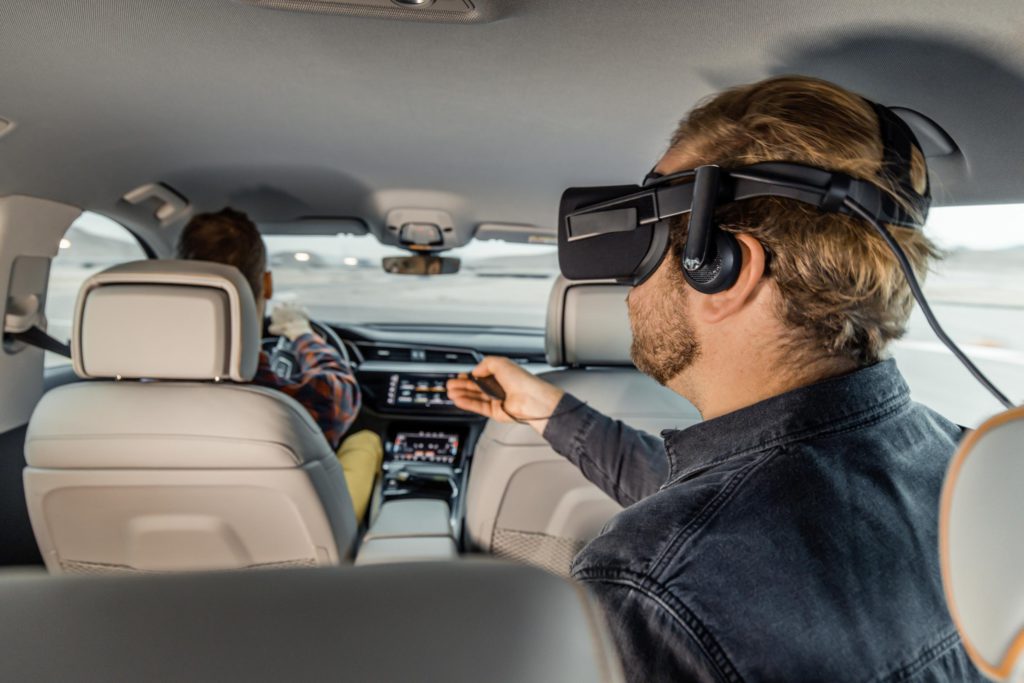Audi enters VR market as Continental pushes autonomy at CES
09 January 2019

09 January 2019
The Consumer Electronics Show (CES) continues to draw vehicle manufacturers and suppliers who are using the event to highlight new technologies making their debut in the automotive sector.
At the event, Audi has presented its vision of the future of entertainment for back seat passengers. They will be able to experience movies, video games and interactive content even more realistically than before with the use of virtual reality glasses.
The premium brand is presenting a technology that adopts virtual content to the movements of a vehicle in real time: If the car drives through a right turn, the spaceship in the experience does the same, for example. Through a subsidiary, Audi Electronics Venture GmbH, Audi has co-founded a start-up company, holoride GmbH, which will commercialise this new form of entertainment via an open platform that will be made available to all carmakers and content developers in the future.
To establish this new category of entertainment on the market as quickly and comprehensively as possible, Audi is taking a new approach: The premium brand has co-founded its start-up, in which it holds a minority interest through the subsidiary Audi Electronics Venture GmbH, which developed the technology. Furthermore, Audi will license the technology to holoride. The start-up will use an open platform to allow carmakers and content developers to create and offer additional extended reality formats.
′Creative minds will use our platform to come up with fascinating worlds that turn the journey from A to B into a real adventure,’ said Nils Wollny, head of digital business at Audi, and future CEO of holoride. ′We can only develop this new entertainment segment by adopting a cooperative, open approach for vehicle, device and content producers.’
holoride intends to launch the new form of entertainment on the market within the next three years using standard VR glasses for backseat passengers. In the long term, the continued expansion of car-to-X infrastructure could also see traffic events becoming a part of the experience: Stopping at traffic lights could introduce unexpected obstacles to a game or interrupt a learning program with a quick quiz.
Continental deliveries
Meanwhile, Continental is pushing the boundaries of autonomous vehicle technology at CES, exhibiting how a driverless vehicle could be used to stage and deploy delivery robots, taking packages all the way to the consumer, even when they’re not able to physically receive them.
The seamless integration of a driverless vehicle – in this case, the Continental Urban Mobility Experience (CUbE) – and a delivery robot present a more effective and efficient distribution of goods. The CUbE, Continental’s autonomous electrified development platform, is generally considered as a solution for urban ′first or last mile’ mobility. This type of vehicle – often referred to as a robo-taxi or pod – will be a part of the seamless mobility value chain. The purpose of these vehicles will be extended to goods delivery to further utilise the available transport capacity and reduce idle times
′With the help of robot delivery, Continental’s vision for seamless mobility can extend the right to your doorstep. Our vision of cascaded robot delivery leverages a driverless vehicle to carry delivery robots, creating an efficient transport team,’ said Ralph Lauxmann, Head of Systems & Technology, Chassis & Safety division, Continental. ′Both are electrified, both are autonomous and, in principle, both can be based on the same scalable technology portfolio. These connections create an exciting potential for holistic delivery concepts using similar solutions for different platforms. Beyond this technology foundation, it’s reasonable to expect a whole value chain to develop in this area.’